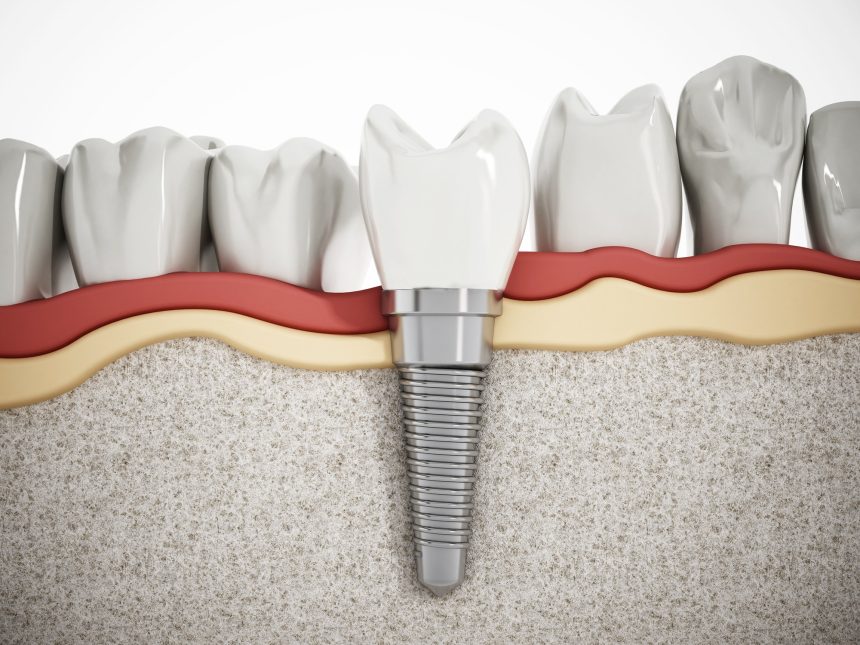Is there a gap in your smile? You might have started hiding your teeth behind closed lips as a result. A missing tooth could impact your oral health if left unattended.
Meanwhile, you might feel your self-confidence is lower than usual, too.
Thankfully, there is a solution. Endosteal implants can replace any teeth you’re missing. In fact, dental implant procedures increased by over 6% between 2019 and 2020.
The total number of dental implants could increase by 23% between 2020 and 2026, too.
On the fence about scheduling a dental implant procedure? Here’s everything you need to know about the dental implant process. After reading this guide, you could determine an implant is perfect for your needs.
Read on to learn everything you need to know about dental implants today!
What are Endosteal Implants?
First, let’s answer the question that likely brought you here in the first place. What are endosteal implants?
An endosteal implant is a type of dental implant. It’s placed in the jawbone as an artificial root. The root is responsible for holding a replacement tooth, or crown.
Usually, dental implants are ideal for patients who have lost a tooth.
These implants are often made using titanium. They often look like small screws. The implant is placed in the jawbone and will protrude through the gums.
Though endosteal implants are the most common type of implant, they’re only one potential option. For example, a dentist might recommend a subperiosteal implant if you don’t have enough jawbone.
Subperiosteal implants are placed on or above the jawbone, rather than in the jawbone. They’re located under the gum but protrude through the gum to hold the replacement tooth in place.
Schedule a consultation appointment with your dentist to discuss the types of dental implants. They’ll determine whether an endosteal or subperiosteal implant is ideal for your situation.
Ideal Candidates
Remember, your dentist might recommend an endosteal implant if you’re missing a tooth. However, you’ll also need to meet certain criteria. You’ll need to have:
- Good general health
- Good oral health
- Enough bone in the jaw
- A jawbone that’s already fully grown
- Healthy gum tissue
- An inability or unwillingness to wear dentures
Let your dentist know if you use tobacco products or have periodontal disease. If so, your dentist might determine you’re not an ideal candidate.
You’ll also need to commit several weeks or months to the overall process.
Other Options
If you’re not an ideal candidate for an endosteal implant, your dentist might recommend alternative treatment options.
Remember, they might suggest subperiosteal implants, which are replaced above the jaw. They might recommend bone augmentation, too. This process involved restoring bone in the jaw using growth factors or additives.
Otherwise, they might recommend ridge expansion. Bone graft material will allow them to add a small ridge along the top of the jaw.
Sinus augmentation is another alternative option. In this case, bone is added below the sinus.
These options can make your jawbone large or strong enough to hold endosteal implants.
Why You Need Dental Implants
About three million people will receive 5.5 million implants every year in the US.
How can the dental implant procedure benefit your health or quality of life?
For starters, a dental implant can fill a gap in your smile. It could improve your appearance, which could boost your self-confidence. However, not many people realize dental implants can also benefit your oral and overall health.
For example, you might find it’s difficult to eat certain foods when you’re missing a tooth. You might start removing certain foods from your diet as a result. You could fail to receive the vitamins and minerals you need from your diet.
Meanwhile, no one enjoys avoiding their favorite foods.
A dental implant might help you speak a little easier, too. Otherwise, the gap between your teeth could cause a lisp.
A dental implant will also give your jawbone the stimulation it needs. Otherwise, the jawbone could begin to deteriorate. You might notice your skin has started to wrinkle as a result.
Without an implant, the surrounding teeth will start to lean toward the space. Your teeth might appear crooked, leading to future problems.
Instead, you can avoid these issues by undergoing the dental implant process.
The Procedure
Before your dental implant procedure, talk to your dentist. They’ll help by developing a treatment plan. You’ll need to plan for multiple appointments, usually a few months apart.
To prepare beforehand, make sure you have someone to drive you home on the day of the procedure.
If you’re requesting IV sedation, avoid eating after midnight the evening before your surgery. If you choose local anesthesia, you can have a light meal before the appointment.
Talk to your dentist about any antibiotics you might need to take beforehand. They might request you use an antibacterial mouthwash before the procedure, too.
The first appointment will allow your dentist to place the implant. They’ll numb your mouth using IV sedation or local anesthesia first. If a part of your tooth is still in place, they might need to remove it.
Then, they’ll make an incision in your gums. They’ll place the tooth root implant, then close your gums.
During the next few months, bone will begin to grow around the dental implant. This process is called osseointegration. It ensures the implant is strong enough to remain in place.
Once the process is complete, your dentist will place a connecting piece over the implant. The abutment they place is responsible for holding the new tooth in place.
Then, they’ll create your custom replacement tooth. Once the crown is ready, they’ll attach the replacement tooth to the abutment.
Do dental implants hurt? You shouldn’t experience any pain during the procedure. However, you might experience a small amount of discomfort afterward.
Make sure to follow your dentist’s aftercare plan. For example, you’ll likely need to eat soft foods for a week to avoid unnecessary pressure.
Stunning Smiles: Your Guide to Receiving Endosteal Implants
To recap, what are endosteal implants? They’re a great treatment option if you’re missing a tooth. Undergoing the dental implant procedure could help you avoid complications in the future.
Consider scheduling a consultation appointment with your dentist to determine if dental implants are right for you.
Searching for more helpful guides? You’ve come to the right place.
Explore our latest articles today for more.















